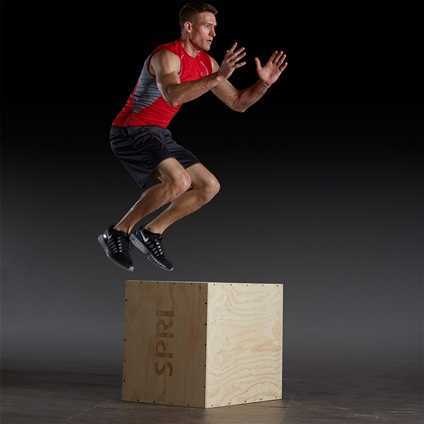Home »
Misc »
How to increase jump height for basketball
How to increase jump height for basketball
7 Exercises to Improve Jump and Agility
In basketball, having a strong vertical jump and flash-like agility isn’t an option, it’s a requirement. If you are having trouble with your vertical jump or agility, just practicing lay-ups and running laps around the court doesn’t mean you will get any better. When you want to jump higher and have insane side-to-side agility reflexes, you need to base your basketball skills training on the best and most proven exercises. Here is a basketball skills training program that must be in your weekly workouts for explosiveness.
7 Basketball Skills Training
1. Jump SquatsThis upgraded version of the traditional fitness exercise is sure to skyrocket your vertical jump. What’s more, it develops explosive power that will easily come in handy with your agility on the court. It activates the fast-twitch fibers of several major muscle groups in the lower body including the quadriceps, hamstrings, glutes, hip flexors, and calves.![]() If you want to jump higher, these are a must.
If you want to jump higher, these are a must.
How to Perform: Stand tall with your feet at shoulder-width distance. Keep your chest up as you bend at the knees and sit back as if you’re about to sit in a chair. Once your thighs reach parallel, push through your heels in an explosive jump straight up in the air. Land softly and immediately go into your next jump squat.
Ability Focus:
- Vertical Jump
- Explosive Power
2. Tuck Knee JumpsAnother great way to increase your explosive power, tuck knee jumps aren’t just a way for you to jump higher. They also demand lower body control to bring the knees up, touch the chest, and return before you land. This exercise will increase coordination, fast-twitch fiber control, and, of course, all-out power.
How to Perform: Stand tall with your chest up and feet at shoulder-width apart. Similar to the jump squat, you’ll start by bending slightly at the knees and driving your hips back only a little bit. From here, jump straight up into the air. Simultaneously flex your pelvis and bring your knees up towards your chest. Reverse the motion and land softly. Take a pause to correct any posture issues then perform the next repetition.
From here, jump straight up into the air. Simultaneously flex your pelvis and bring your knees up towards your chest. Reverse the motion and land softly. Take a pause to correct any posture issues then perform the next repetition.
Focus:
- Vertical Jump
- Explosive Power
- Lower body control
3. Overhead Reaching JumpConsider this the next level of the jump squat. It will combine the explosive upward motion of the jump squat with a standard overhead reach that is all too common in your sport. You might find that you can jump higher with this variation of the exercise from the momentum of the overhead reach itself. We don’t need to tell you how important a strong overhead reach is for defense and catching passes.
How to Perform: Stand tall with your chest up and feet at shoulder-width apart. Similar to the two exercises above, you’ll start by bending slightly at the knees and driving your hips back only a little bit.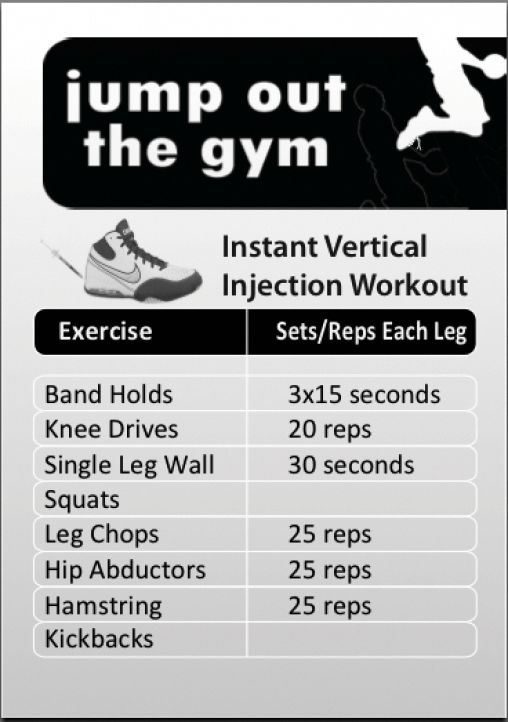 From here, jump straight up into the air. The big difference is that as you jump, you’ll simultaneously launch your hands skyward. As you descend, bring your hands into a defensive position close to the chest. Land soft, readjust your posture, and begin again.
From here, jump straight up into the air. The big difference is that as you jump, you’ll simultaneously launch your hands skyward. As you descend, bring your hands into a defensive position close to the chest. Land soft, readjust your posture, and begin again.
Focus:
· Vertical Jump
· Explosive Power
· Reaching ability
4. Single-Legged Cross JumpsTraining your body, regardless of the athletic goal, requires a balance of multi-joint and isolation movements. When you isolate a muscle group, you are strengthening its ability to perform a specific movement, which in turn will support the larger muscle group movements. In this case of improving your jumping ability and agility, you’ll want to perform single-legged cross jumps.
How to Perform: You will make the shape of a cross with thisjumping drill. Start on the left leg with the right leg tucked behind. With your chest up and core tight, leap forward with your left leg.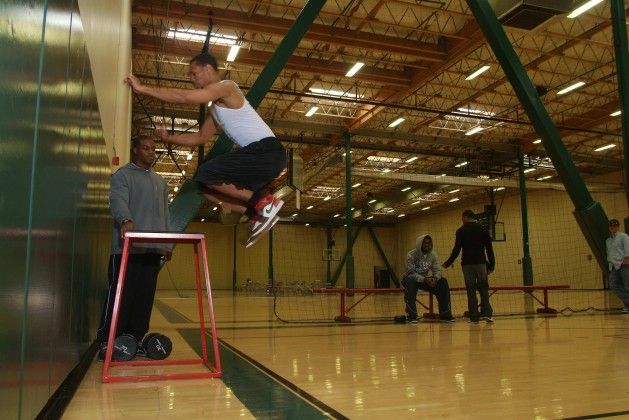 While still facing forward, leap on your left leg to the left side and down. Now leap directly to the right, and finally back to the starting position. Switch legs and begin again.
While still facing forward, leap on your left leg to the left side and down. Now leap directly to the right, and finally back to the starting position. Switch legs and begin again.
Focus:
- Vertical Jump
- Explosive Power
- Agility
5. Wall Touches / Cone TapsLet’s focus more on the agility side of things, although explosive power will continue to be developed and improve your vertical jump. A classic athletic drill, wall touches or cone taps are great for developing those quick reflexes that will show in your improved agility.
How to Perform: Set up two cones a good distance apart from one another. Begin in the middle of the cones. If you’re using walls, stand between two walls. An indoor racquet ball court works best. Sprint to your right as fast as you can, tap the cone or wall, then immediately change direction and do the same on the other side. You can vary the distances for each set that you do.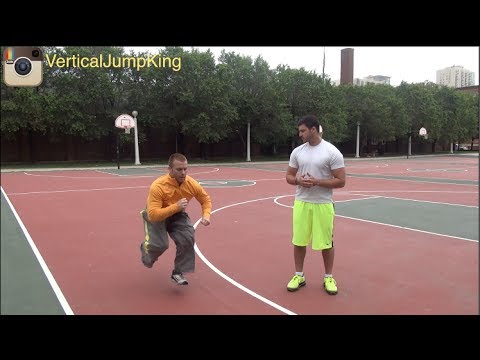 If you’re using cones, you can also add a second or third pair in a ladder-like arrangement, where you’ll have to sprint in a zig-zag fashion from side to side.
If you’re using cones, you can also add a second or third pair in a ladder-like arrangement, where you’ll have to sprint in a zig-zag fashion from side to side.
Focus:
6. Lateral Plyometric Box JumpsEveryone performs box jumps, even the Average Joes at the gym. For basketball players, box jumps are going to be incredibly important but there’s a twist: you’ll be jumping in a lateral fashion. Lateral box jumps will strengthen your hip flexors, which will benefit your side-to-side agility with an emphasis on sudden stop-and-go.
How to Perform: Arrange a steady box on the ground. Stand next to it with your left side facing the box. Keep your chest up and core tight as you slightly bend your knees. Explosively leap from the ground and completely on the box. You can choose to step down or lightly jump back into the starting position. Once you finish your prescribed repetitions, switch sides.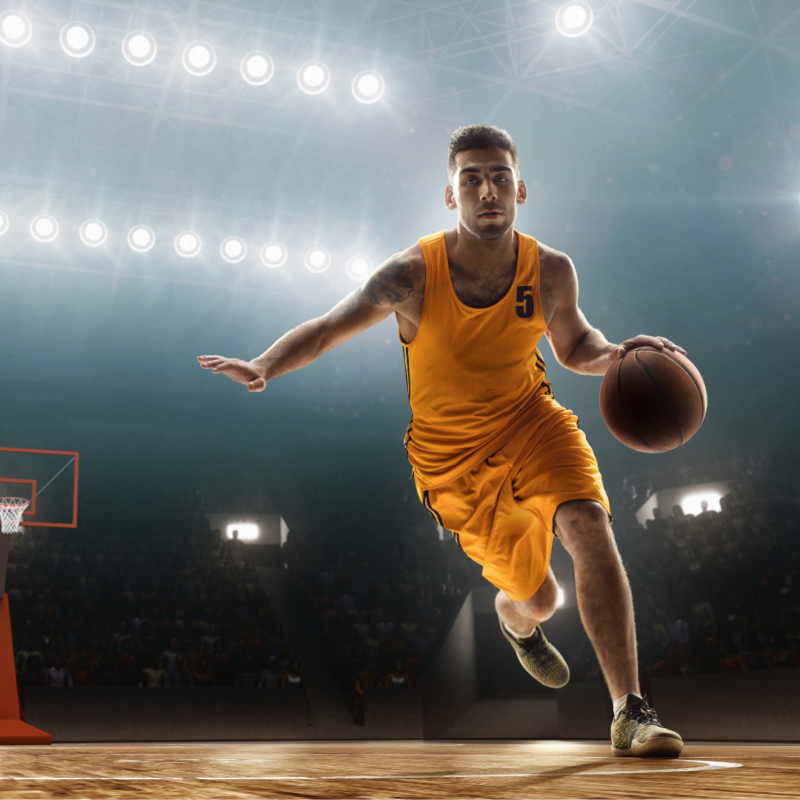 Make sure you vary the height of the boxes during the workout, challenging yourself to increase the height.
Make sure you vary the height of the boxes during the workout, challenging yourself to increase the height.
Focus:
- Explosive Power
- Agility
- Jumping Ability
7. Uphill SprintsOur final workout is a classic that is used by athletes in every sport, but uphill sprints have a unique place in the basketball player’s workout. Uphill sprints dramatically improve your endurance levels, but more importantly for performance, they skyrocket your explosive power and lower body strength.
How to Perform: Begin with a warm-up before tackling sprints. Starting from the bottom of a hill, give yourself about 10 to 20 feet to work up your speed. Run for those 10 to 20 feet then once you hit the hill, go all out. Run as fast as you can until you reach the top of the hill, walk back down, rest for a few moments, and do it again. Do not sprint down the hill.
Focus:
- Explosive Power
- Lower Body Strength
Get More Training Drills
How to Double Your Vertical Jump for Basketball
Photo courtesy of Dirk Hansen
A good vertical jump is a valuable asset for all of your players to possess. It will help your team get more rebounds, blocks, and steals. It will also let a few (or many) players on your team dunk the basketball, which can lead to increasing your teams confidence, enthusiasm, and can it make the game a lot more fun!
It will help your team get more rebounds, blocks, and steals. It will also let a few (or many) players on your team dunk the basketball, which can lead to increasing your teams confidence, enthusiasm, and can it make the game a lot more fun!
If you are wondering if it is even possible to increase your vertical jump, you’ll be happy to know that with proper training, it is definitely something that can be improved.
I’ve developed this program over a number of years and have seen great improvements in the leaping ability of those who have followed it. I call it the Coach Mac Vertical Jump Program. Not a very creative name, is it? 🙂
I designed this program to be completely equipment free and also without the need for a large space. This program can be completed by anyone as long as you have a 2 x 2 meters of free space. Which we all do. So there can be no excuses for not completing the program.
Disclaimer: Obviously, I am not a doctor. If you or your players feel any pain in any of your joints during the program stop immediately and consult a doctor. You don’t want to make any previous injuries any worse.
You don’t want to make any previous injuries any worse.
Update for 2021!Best Vertical Jump Program in the WorldI have found what I believe to be the current best vertical jump program in the world, and it’s Vert Shock by Adam Folker.
While there are a ton of success stories of players using my program and making massive gains (check the comments if you don’t believe me), I’m also realistic about the extent of my knowledge on vertical jump training.
Adam Folker is a former NCAA Division I basketball athlete and professional basketball player. He connected with Justin ‘Jus Fly’ Darlington who currently holds the title as the World’s #1 Highest Dunker to create the best vertical jump program ever.
If you’re interested, check out his program below. I highly recommend it.
Vert Shock by Adam Folker
If you’re not interested in it that’s fine! You’ll still make a ton of gains using my workout. And I’d love you to use it! I made a promise to myself that I’d share the best information and products I know about and I’m keeping that promise.
And I’d love you to use it! I made a promise to myself that I’d share the best information and products I know about and I’m keeping that promise.
How to Measure Your Vertical JumpAs the saying goes, ‘You can’t improve what you can’t measure’.
The first step on your journey to increasing your vertical jump is to get a starting point of where your currently at so that you can track your progress.
Here’s how to do it;
Things you’ll need: Another friend to help you, a ladder, and either a permanent marker or chalk.
1. Find a wall or pole tall enough that when you jump you cannot touch the top.
2. Stand next to the pole or wall and extend your arm as high as you can above your head. This is your standing reach. Have your friend mark your standing reach with either a piece of chalk or a permanent marker.
3. Now from a standing start, jump and touch as high up the wall or pole as you possibly can. You’ll need your friend to watch and see where you touch so that there’s no confusion. Get your friend to climb the ladder and mark where you were able to reach on the wall.
You’ll need your friend to watch and see where you touch so that there’s no confusion. Get your friend to climb the ladder and mark where you were able to reach on the wall.
4. Measure the distance between your standing reach and your jumping reach. This is your current vertical jump.
Important Information on the Coach Mac Vertical Jump ProgramWarming UpBy reading my previous article on stretching, you’ll learn that it is important to warm-up your muscles first before stretching or performing any strenuous physical activity. I recommend jumping rope for a couple of minutes to warm-up and increase the blood flow to your muscles.
PhasesThe program is broken up into three different phases consisting of four weeks each. This is because as you continue through the program your muscles will adapt to the intensity of the workout, therefore we need to keep increasing the workload in order to continue increasing your vertical jump.
FrequencyPerform the routine every second day to give your body a days rest in-between workouts. This means that on week one you’ll be training 4 times a week, week two you’ll be training 3 times per week, and on week three you’ll be training 4 times per week. That ends up being 11 workouts per phase for a total of 33 workouts in the program. Also, during this program you will be taking one week off between each phase to let your body completely recover. You need to give your muscles time to fully repair in order to grow stronger and more explosive.
Rest IntervalsOne minute rest in-between all sets. If you can, try to keep a stop watch with you when you’re doing these workouts. If you don’t have one my players have found it convenient to use the stop watches located on their mobile phones.
Record Your ProgressKeep track of how much progress you’ve made at the end of each rest week. It’s going to be hard for your players, but stress that if they really want to see results it’s best that they wait until the end of the rest week.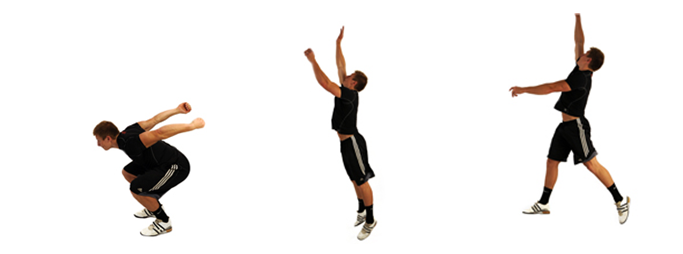 We know how hard it is for players to be patient!
We know how hard it is for players to be patient!
Exercises:If you have any trouble understanding my descriptions of the exercises, YouTube them to watch a video of the exercise being performed.
Jumping Rope – A skipping rope is the only piece of equipment involved in the program. If you don’t have one a piece of rope will do just fine. If you don’t have a piece of rope either jumping up and down on the spot without much bending in the knees will achieve a similar result. Jumping rope involves holding a rope with both hands and swinging it around your body continuously.
4-Corners – Involves you imagining 4 dots in a square shape about 15 – 20 inches apart. To complete 4-corners you hop around the square in a clockwise direction landing on each dot for the required number of repetitions. 4 jumps and completing the square equals one repetition.
Single-Leg 4-Corners – Exactly the same as 4-Corners except performed on one leg.
Slow-Motion Squats – Involves standing with your feet shoulder width apart. From this position slowly lower down until you are in a deep squat making sure your heels are flat on the ground. Hold for 2 seconds before slowly rising back to the starting position. The descent and rise should each take 4 seconds to complete. Throughout the entire exercise make sure to keep your head up and your back straight.
Tuck Jumps – Tuck jumps involve descending into a comfortable squat and then jumping as high as possible and bringing your knees to your chest.
High-Reach Jumps – Are similar to tuck jumps, but instead of brining your knees to your chest, you just reach as high as you can. This is done best under a basketball ring or near a wall so that you can tell how much lower your reach becomes as you fatigue. Try to reach the same height through all repetitions. if you don’t have anything to measure against, that’s fine. Just jump as high as you can each repetition.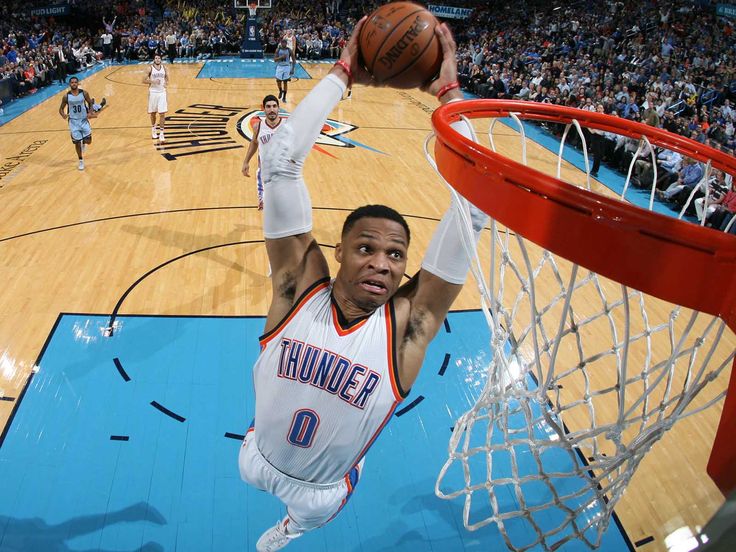
Lateral Jumps – Lateral jumps are performed best with over a line or a stick. They involve standing parallel to the line on one side and then quickly jumping sideways back-and-forth over the line. Over and back equals one repetition.
Single-Leg Lateral Jumps – Exactly the same as lateral jumps except performed on one leg.
Alternating Lunge Jumps – From a normal standing position, take one step forward with your right foot and one step backwards with your left foot. This is your starting position. From this position, jump as high as you can in the air and switch leg positions.
Straight Leg Calf Jumps – Without bending your knees, jump up and down in the same spot. You won’t get very high off the ground and it will be the ankle doing all the movement which will work the calf muscle.
Toe Raises – Stand regularly, then raise up onto the tips of your toes. Lower back down. Don’t rock up and down, do it slowly (not too slowly) but steadily. This is improved by using stairs if you have access to them. Alright, enough talk. Here’s the program you’ve all been waiting for.
This is improved by using stairs if you have access to them. Alright, enough talk. Here’s the program you’ve all been waiting for.
Coach Mac Vertical Jump ProgramPhase 1 – Weeks 1 – 31. Jumping Rope – 2 minutes.
2. Stretching
3. Jumping Rope – 2 minutes.
4. Slow Motion Squats – 3 sets of 10 repetitions.
5. Lateral Jumps – 3 sets of 20 repetitions.
6. Alternating Jump Lunges – 3 sets of 10 repetitions.
7. Tuck Jumps – 3 sets of 8 repetitions.
8. Toe Raises – 3 sets of 20 repetitions.
Week 4 – Rest.
Phase 2 – Weeks 5 – 71. Jumping Rope – 2 minutes.
2. Stretching
3. Jumping Rope – 3 minutes.
4. Slow Motion Squats – 3 sets of 10 repetitions.
5. 4-Corners – 3 sets of 12 repetitions.
6. Single-Leg Lateral Jumps – 3 sets of 15 repetitions.
7. Alternating Jump Lunges – 3 sets of 15 repetitions.
8. High Reach Jumps – 3 sets of 8 repetitions.
9. Straight-Leg Calf Jumps – 3 sets of 30 repetitions.
Week 8 – Rest.
Phase 3 – Weeks 9 – 111. Jumping Rope – 2 minutes.
2. Stretching
3. Jumping Rope – 4 minutes.
4. Slow Motions Squats – 3 sets of 10 repetitions.
5. Single-Leg 4-Corners – 3 sets of 10 repetitions.
6. Single-Leg Lateral Jumps – 3 sets of 20 repetitions.
7. Alternating Jump Lunges – 3 sets of 20 repetitions.
8. Tuck Jumps – 3 sets of 8 repetitions.
9. Straight-Leg Calf Jumps – 3 sets of 40 repetitions.
Week 12 – Rest.
I have found what I believe to be the current best vertical jump program in the world, and it’s Vert Shock by Adam Folker and Justin ‘Jus Fly’ Darlington.
Important Update! – I have been receiving a few emails/comments on players tracking their jump during the course of their program. Please understand that what you are doing when completing a jump program is breaking down the muscle. You aren’t going to see improvements mid-week because the muscle hasn’t healed properly. That’s why I suggest only checking how much you’ve improved at the end of each rest week. Rest is just as important as the routine.
That’s why I suggest only checking how much you’ve improved at the end of each rest week. Rest is just as important as the routine.
That’s it! It’s as simple as that.
I’ve seen players make massive gains using this exact program so don’t hesitate giving it to your players to help them improve.
They’ll love it too. Who doesn’t want to dunk a basketball?
Let me know how the program works for your players. I’d love to hear some of the results.
– Coach Mac
TOP 10 JUMP EXERCISES - maaario's blog
It is very important for a basketball player to have a high jump. Moreover, each player entering the court must have trained legs to perform explosive work. Today we will analyze the 10 most effective exercises to increase the jump.
So, let's begin. First, let's look at strength exercises:
1. Barbell squat. Weighted squats develop all leg muscles, abdominals and lower back muscles. Thus, this is the only exercise that allows you to strengthen all the muscle groups necessary for high jumps.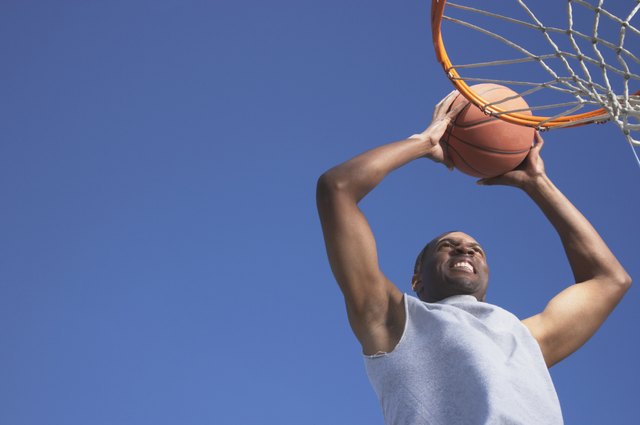 We recommend that you sit at least until your thighs are parallel to the floor. When doing a squat, make sure that the knees do not go ahead of the socks, because in this case there is a high probability of damaging the ligaments, and in basketball they always get a lot of stress anyway;
We recommend that you sit at least until your thighs are parallel to the floor. When doing a squat, make sure that the knees do not go ahead of the socks, because in this case there is a high probability of damaging the ligaments, and in basketball they always get a lot of stress anyway;
2. Squat with a barbell on a pedestal or bench. The exercise is similar to regular barbell squats. However, it has its own peculiarity. A cabinet or bench is designed to limit the amplitude of squats. This is necessary in order to already use explosive power. You should sit down in two counts. As soon as you touch the bounding surface with your hips, you abruptly get up to the starting position. Thus, you provide a slow stretch and a fast contraction of the thigh muscles. This exercise is performed with a lighter weight than a regular squat. Up to 70% of the maximum;
3. Snatch. Great weightlifting exercise. Perfectly develops intermuscular coordination, which is very important in basketball.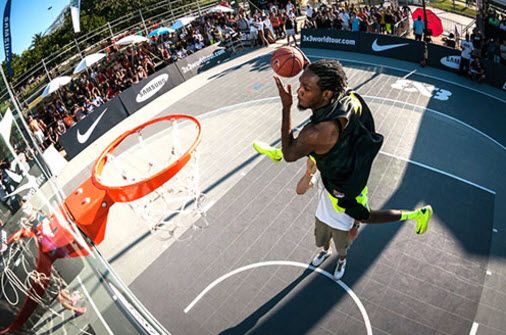 Plus, explosive strength is trained and most of the muscle groups involved in the jump are alternately involved in the work. Watch your back while doing this exercise. Start doing with small weights so as not to get injured right away;
Plus, explosive strength is trained and most of the muscle groups involved in the jump are alternately involved in the work. Watch your back while doing this exercise. Start doing with small weights so as not to get injured right away;
4. Forward lunges with dumbbells. In this exercise, you will thoroughly work out all the muscles of the thigh and also use the back stabilizers. An excellent exercise for training the endurance of the thigh muscles. When performing, special attention should be paid to the position of the knee at the time of lowering. It should not protrude beyond the toe. Otherwise, there is a chance of overloading the knee joint;
5. Stepping onto the step with dumbbells. This exercise will allow us to train the pushing process. This point is very important if you want to make noticeable progress when training your jump. Unlike lunges, you can do this exercise with more weights. Don't rush when doing it. Remember that too intense movements will lead to premature fatigue.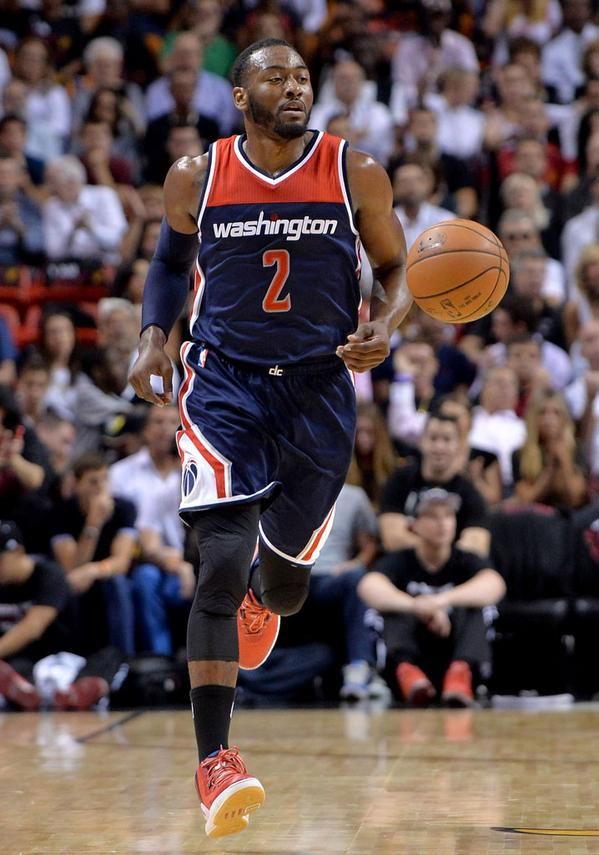 It is, after all, a strength exercise.
It is, after all, a strength exercise.
So, we have analyzed the exercises aimed at strength work and at strengthening and developing muscle fibers. All exercises must be performed in 4 sets, including 10-12 repetitions. However, the number of repetitions in squats on a bench or bench, lunges forward with dumbbells and stepping on a step with dumbbells, we periodically recommend increasing to 16-18. This will allow your fibers to work in a slightly different way, which will also have a beneficial effect on your jump.
Next, consider jumping exercises for developing explosive strength, coordination and footwork speed, which is very important when training to jump.
1. Working with barriers. Using practice hurdles is an excellent way to develop fast footwork, coordination, leg hop and power. Hurdles are used in many professional basketball clubs. There are several steps to increasing the difficulty of training with hurdles. The main ones include regulating the height of the barriers and increasing the intensity of the footwork.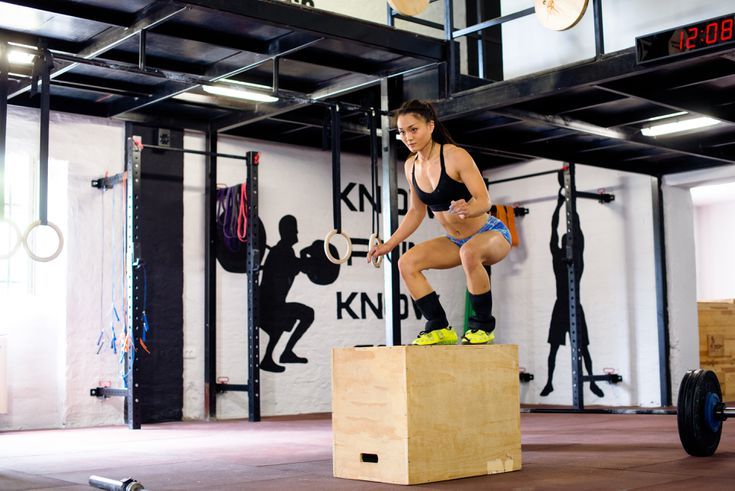 Do not rush to immediately start with high obstacles and high speeds. Increase the difficulty gradually;
Do not rush to immediately start with high obstacles and high speeds. Increase the difficulty gradually;
2. Running work. First of all, these are sprints with full gear at distances of different lengths and shuttle running. With such training, we will qualitatively work out a quick start, repulsion of the legs, and also prepare ourselves for the work at a ragged pace, which is necessary during the game. We recommend varying the length of the distance. Especially in the case of a shuttle run;
3. Jumping to the ring. The exercise is performed with two legs. In the starting position, the legs are shoulder-width apart. This exercise perfectly trains balance and simulates the work of the body during the game. We divide jumps into two types. These are low-intensity jumps that are designed to work on footwork, landing, take-off and peak jumping. As well as serial jumps. In basketball, a very important factor is serial jumping, that is, the ability of an athlete to make several jumps in a row with the same efficiency. In the fight under the ring, this can be a determining factor. Therefore, we must work out both options for jumps;
In the fight under the ring, this can be a determining factor. Therefore, we must work out both options for jumps;
4. Jumping on the pedestal. This is a great exercise to practice your jumping skills and increase your jump height. When performing the exercise, do not narrow the distance between the legs, they should be shoulder-width apart. When landing on the bollard, try to transfer the load exclusively to the socks. In this exercise, it is important to use your hands. Thus, we involve in the process all the muscle groups involved in the jump when playing basketball. We vary the load by increasing the height of the pedestal;
5. Jumping from the depths. This exercise is aimed at practicing a repeated jump or a jump from a jump. Standing on the edge of the pedestal, you jump to the floor and then immediately jump as high as possible. Use your hands while doing this. Plus, landing is being worked out. Again, the main load should go to the socks, that is, to the calf muscle.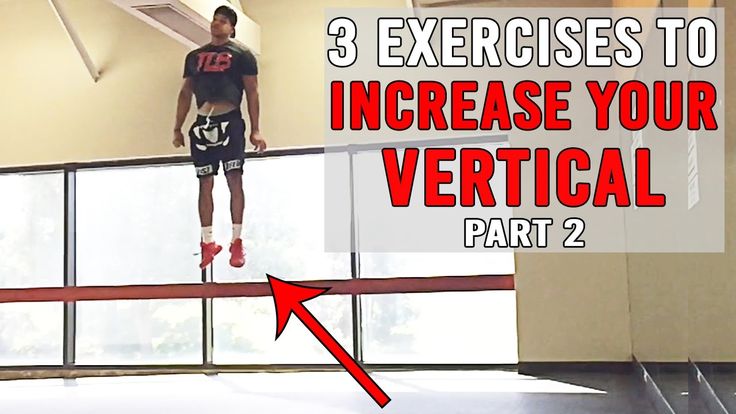
So, we have considered the basic dynamic jumping exercises. We recommend that you perform them on days free from game training. Try to do so many repetitions so that there is no distortion of technique. This will avoid muscle injuries and unnecessary stress on the joints.
Together, all the exercises discussed in this video will lead to inevitable progress and an increase in your jump. But once again we draw your attention to the fact that you should not immediately expose yourself to serious stress. After all, in training, the main thing is to make yourself better, and not vice versa.
So, that's it. Subscribe to our channel, ask questions in the comments and remember that a lot of interesting things are ahead of us.
How to increase the jump? 5 tips
Every basketball player dreamed of jumping higher.
Every basketball player dreamed of jumping higher.
LOOKING AT MICHAEL, KOBE, VINC AND LEBRON? WANTED TO JUMP ALSO HIGH AND SCORE FROM THE TOP? PRACTICALLY EVERY BASKETBALL PLAYER WANTED THIS.
We asked our coach Sergey Nagorny to give 5 tips to help improve your jump.
We asked our coach Sergey Nagorny to give 5 tips to help improve your jump.
"The more power you have and the more you can apply power to the ground, the higher you can potentially jump. To increase your strength, you can choose any exercise: pulls, squats, lunges. Do what you like best and gradually increase the weight of the weights. "
Sergey Nagorny
Physical trainer training
Strength increase
Speed increase
"In addition to strength, the jump depends on speed, so this component also needs to be worked on. The easiest way is to sprint for short distances from 10 to 40-60 meters, and also work with sleds. "
Sergey Nagorny
Physical trainer training
"This advice applies to both the workout itself and resting between sets, as well as recovery between sessions. People often start turning speed and jump workouts into endurance work. If you don't recover enough between sets and between workouts, then you you will never develop your jump to the maximum."
If you don't recover enough between sets and between workouts, then you you will never develop your jump to the maximum."
Sergey Nagorny
Physical trainer training
Proper rest
"Same skill as throwing, snatching, etc. You have to be able to move efficiently. Jump more often - move more efficiently, but don't forget about recovery."
Sergey Nagorny
Physical trainer training
Jumping is a skill
Sleep more and eat right
"We are all looking for ways to recover better and use different modern gadgets to do this, but it all starts with simple things. Good sleep and proper nutrition are must-have items for a better recovery that everyone has at hand."
Sergey Nagorny
Physical trainer training
SIGN UP
Coach: Sergey Nagorny
Professional athlete, works with athletes from Russia and the CIS. Performing dunker, creator and host of the Action video channel about athleticism in team sports.